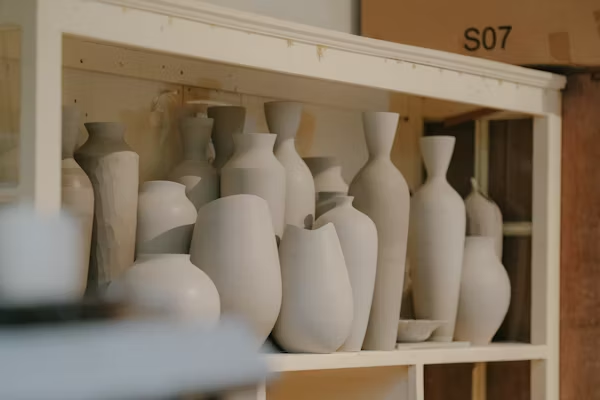TOPIC
Gärningen: More Than Just an Act

Language often hides meaning beneath its surface: words carry histories, ethical weight, legal implications, cultural identity. The Swedish word gärningen is one such word. On the surface, it means “the act” or “the deed,” but in its usage, in law, in literature, in everyday life, it carries far deeper resonance. This article unpacks what gärningen means, where it comes from, how it functions in Swedish legal and moral thinking, and why it remains so significant.
Etymology and Literal Definition
“Gärningen” is the definite singular form of gärning. In Swedish:
-
gärning = a deed, an act
-
gärningen = the deed / the act (specific, known, definite)
-
The plural is gärningar, and the definite plural gärningarna.
The root comes from the verb göra, “to do / to make,” which in turn traces back through Old Norse gerning(r) or gørning, etc. So the word is deeply embedded in the linguistic history of the Scandinavian languages, carrying with it senses of doing, making, acting.
While gärning can be neutral (simply an act), gärningen tends to suggest a specific, maybe charged, action—something already known, already committed.
Legal Meaning: The Core of Swedish Criminal Law
In Swedish legal and criminal justice contexts, gärningen plays a central role. It’s not merely a stylistic word—it points to what has been done, factually, in order to establish responsibility, guilt, and legal consequences.
Some of the ways gärningen is used in law:
-
Identification of the Act
Before anything else—before motive, before intention—the courts and prosecutors must establish what exactly happened. What was the deed? What is gärningen being alleged? This includes where, when, how, by whom. -
Separation of deed from intent (“uppsåt”) or negligence (“oaktsamhet”)
Swedish law distinguishes between the act itself (gärningen) and whether that act was done intentionally or through negligence. The classification often depends on that. For example, uppsåtlig gärning (intentional deed) vs oaktsam gärning (negligent deed). -
Crime vs Deed
Brott means crime under the law; gärningen is the deed that may constitute a crime. The law needs to tie gärningen to a legal statute describing prohibited deeds. Without establishing the deed itself, there can be no crime (in legal terms). -
Evidence and fact finding
Legal proceedings often revolve around discovering evidence about gärningen: forensic evidence, eyewitness accounts, the sequence of events. The moment and manner of gärningen are often crucial. Phrases like på gärningen (“in the act”) or gärningsplats (crime scene) evoke that.
Moral, Ethical, and Cultural Implications
Beyond the law, gärningen also occupies a moral and ethical dimension in Swedish culture—and indeed in many cultures—and that dimension often interacts with law, but also stands independently.
-
Accountability and Character via Deeds
In Sweden, as in many places, people see what you do as more telling than what you say or what you intended. A person’s reputation, integrity, moral standing are often judged by their actions. Gärningen embodies that: it is the concrete, observable thing that reveals something about character. -
Intentions vs Outcomes
While intentions (avsikt) matter—especially legally and morally—gärningen reminds us that results, actual actions, consequences are real in the world. Someone may mean well but harm; someone may mean harm and succeed. Gärningen bridges that gap between inner intention and outer consequence. -
Good Deeds and Heroism
Not all gärningar are negative or criminal. There are goda gärningar: good deeds. In religious, philanthropic, or communal contexts, gärningen signifies acts of kindness, self-sacrifice, moral courage. Literature, sermons, ethical teaching often refer to such deeds. The idea is that extraordinary deeds—heroic or altruistic—are held to be morally significant and sometimes even definitive of one’s legacy. -
Guilt, Remorse, Redemption
Because gärningen is fixed once done, it also brings with it the possibility of guilt, regret, reparation. In moral discourse, one might speak of att ångra gärningen (“to regret the deed”) or the need to atone for one’s gärningar. Memory, narrative, culture keep acts of good and harm alive—so acts are not only legal events but also moral ones.
Usage in Media, Literature, and Everyday Speech
How does gärningen show up in daily Swedish life, in stories, journalism, popular culture? It appears in several interlinked ways that reinforce its importance.
-
Crime Reporting & Journalism
News media often use gärningen when discussing crimes: precise description of what happened, where, when. Headlines might mention gärningen as the core event. It gives focus to the action: “Polisen anlände till platsen strax efter gärningen” (The police arrived at the scene shortly after the act). -
Idiomatic Expressions
Some commonly used phrases:“På bar gärning” – caught in the act.
“Efter gärningen” – after the deed.
“Erkänna gärningen” – to confess the deed.These reinforce that gärningen is not just an abstract concept but a lived moment—something observable, often irreversible.
-
Literature, Crime Fiction, Philosophy
Swedish (and Nordic) crime novels often hinge around uncovering gärningen—what was done, by whom, why. The act is often the mystery: its nature, its consequences, its hidden aspects. Also, philosophical and religious writing uses it to explore themes of justice, character, faith, and identity. What does it mean to live by your deeds; can one deed define a life? -
Everyday Moral Conversation
In moral or ethical conversations among people, gärningen surfaces when someone reflects on a past action: something done or left undone. Even in more mundane contexts, when emphasizing responsibility, or the weight of promises, people may say something like “Den gärningen förändrade allt” (“That deed changed everything”).
Tension Between Deed and Intention: Legal / Moral Implications
An interesting dimension is that gärningen highlights a tension between what was done and what was meant—between action and intent—that plays out differently in legal vs moral contexts.
-
In law, intention often modifies the severity or nature of the offense. Was the act done knowingly, purposefully, recklessly, negligently? The deed (gärningen) is the factual anchor; intention (avsikt / uppsåt) is often what determines guilt or degree of penalty. The deed must be established first.
-
In moral / cultural judgment, people sometimes forgive intentions (if someone genuinely meant well) but often still judge by the deed. Even if intention was good, the harm done by the deed is real; the action leaves traces. And inversely, sometimes a deed done for selfish reasons might nevertheless be admired if its outcome was positive—but moral debates often hinge on both. Gärningen is the concrete point of contact.
-
Justice and proportionality: The legal system often allows for mitigation or aggravation depending on circumstances around the deed: how it was done, how harmful it was, whether there were extenuating circumstances. But these must be analyzed in relation to gärningen, not separate from it.
Why Gärningen Still Matters
Why focus on this word, this idea? Because gärningen touches on things we all care about: responsibility, justice, identity. Some reasons it remains relevant:
-
Legal clarity and fairness
To judge fairly, one must know what was done. Ambiguity about gärningen undermines justice; precision about the deed supports fairness. -
Culture of accountability
Societies that stress deeds over words encourage people to act responsibly, to think before acting, and to live by their principles. Gärningen is a linguistic and conceptual tool for that. -
Moral education
Growing up, people learn that their actions matter: what you do will have real effects. Recognizing that deeds are concrete anchors of moral life helps in ethical development. -
Narrative & memory
Acts—even small ones—often become stories. We remember deeds: acts of kindness, acts of betrayal, moments of courage. Gärningen is the unit of memory in many life narratives. -
Modern challenges
In digital life, for instance, online actions (posts, messages, sharing) are increasingly considered “real deeds” with consequences. The notion of gärningen helps frame ethical and legal responses—for example, to cybercrime, defamation, hate speech.
Comparative Reflections: How Deed / Act vs Similar Concepts
Looking beyond Swedish, many languages and cultures place importance on the deed. But some comparisons help illuminate what is especially Swedish (or Scandinavian) about gärningen:
-
In English we speak of “deeds” vs “intentions,” of being judged by what we do. The concept is widespread.
-
In legal traditions (common law, civil law), distinguishing between act / deed (actus reus, in effect) and mental state (mens rea) is central. Gärningen corresponds roughly to the objective, external part of wrongdoing.
What seems distinctive in Swedish (and often more broadly in Scandinavian culture) is the balance: strong attention to the external act, but also to context, intention, and proportionality, paired with a social expectation of responsibility, modesty, and egalitarianism. Acts matter, but you must also consider motive, circumstances, and outcome. Gärningen is not used lightly; it is reserved for acts with significance.
Possible Limitations or Misunderstandings
No concept is without pitfalls. Some things to watch out for when discussing gärningen:
-
Assuming guilt from the deed: Just because a deed is alleged doesn’t mean the person is guilty. That requires proof and legal proceeding.
-
Overlooking intent: Focusing only on the deed can ignore crucial ethical or legal circumstances.
-
Simplifying complex human actions: Many actions are mixed; motives are mixed; the impact of deed vs other factors (such as social environment) may be significant.
-
Cultural translation issues: Non‑Swedish speakers may misinterpret gärningen by assuming it always implies something criminal or always a moral judgment, when in fact it’s used in many registers and with nuance.
Conclusion
Gärningen is a word that anchors a host of ideas: what we do, how we are judged for what we do, how justice operates, how culture remembers, how ethics demands integrity. It underlines that the deed is often where the rubber meets the road—where intention meets outcome, where moral character meets action, where law must evaluate fact. It’s not just about what someone thinks or plans—it’s about what they actually do, and what follows from that.
TOPIC
Unlocking the Secrets of Wellness with Threetrees.com.vn
Welcome to the world of wellness, where self-care meets holistic living. At health threetrees com vn, we believe that everyone deserves to thrive in both body and mind. In today’s fast-paced life, taking a step back for yourself often feels like a luxury rather than a necessity. However, embracing wellness is not just beneficial; it’s transformative.
TOPIC
Spaietacle: Where Cosmic Vision Meets Creative Brilliance

In an era where imagination and innovation intertwine, Spaietacle emerges as a term that encapsulates the fusion of space and spectacle. It represents a new paradigm that blends artistic wonder, technological brilliance, and cosmic inspiration into a unified experience. Spaietacle is not just an idea—it is a movement toward seeing the universe as a grand stage for creativity. Through its lens, the cosmos transforms from a distant expanse into a canvas for human expression, exploration, and collective awe.
TOPIC
Exploring Sodiceram: The Next Big Thing in Ceramics

Ceramics have long been celebrated for their beauty and versatility, but a new player is emerging in the world of materials: Sodiceram. This innovative substance promises to revolutionize how we think about ceramics, combining functionality with cutting-edge technology. Whether you’re an architect looking for sustainable options or a designer eager to push creative boundaries, Sodiceram could be your next go-to material. Curious about what makes this ceramic so special? Let’s dive deeper into the world of Sodiceram and discover its potential!
-

 NEWS4 months ago
NEWS4 months agoHistorical Churches in Manila
-

 TOPIC4 months ago
TOPIC4 months agoSymbols of Hope: The 15th Belenismo sa Tarlac
-

 TOPIC4 months ago
TOPIC4 months ago“The Journey Beyond Fashion” – Ditta Sandico
-

 TOPIC4 months ago
TOPIC4 months ago“Recuerdos de Filipinas – Felix Laureano”
-

 TOPIC4 months ago
TOPIC4 months ago5 Must-Have Products From Adarna House to Nurture Your Roots
-

 TOPIC4 months ago
TOPIC4 months agoRIZAL at 160: a Filipino Feat in Britain
-

 TOPIC4 months ago
TOPIC4 months agoBoats with Two Strings
-

 TOPIC1 month ago
TOPIC1 month agoUnveiling AvTub: Your Ultimate Guide to the Best AV Content
